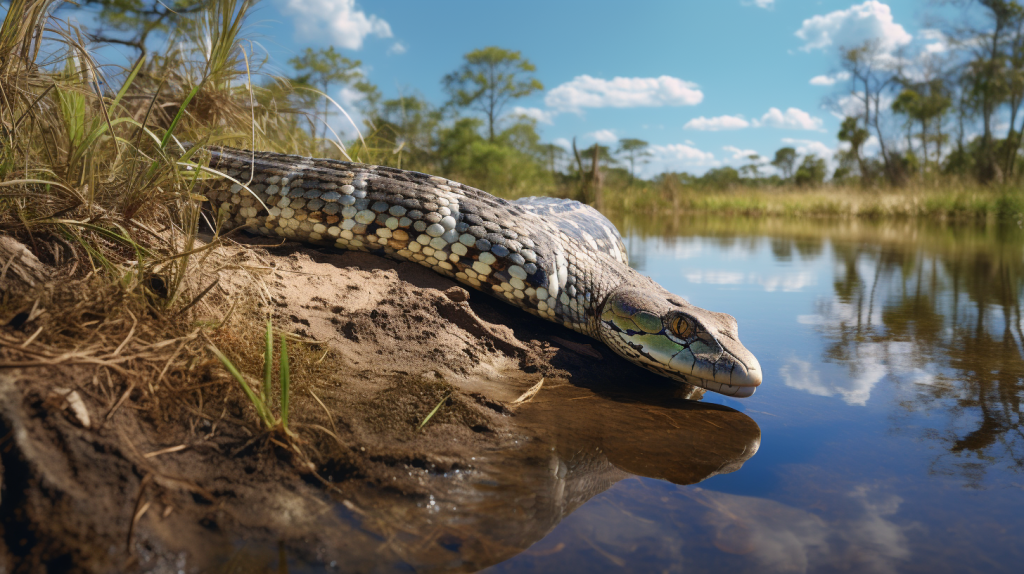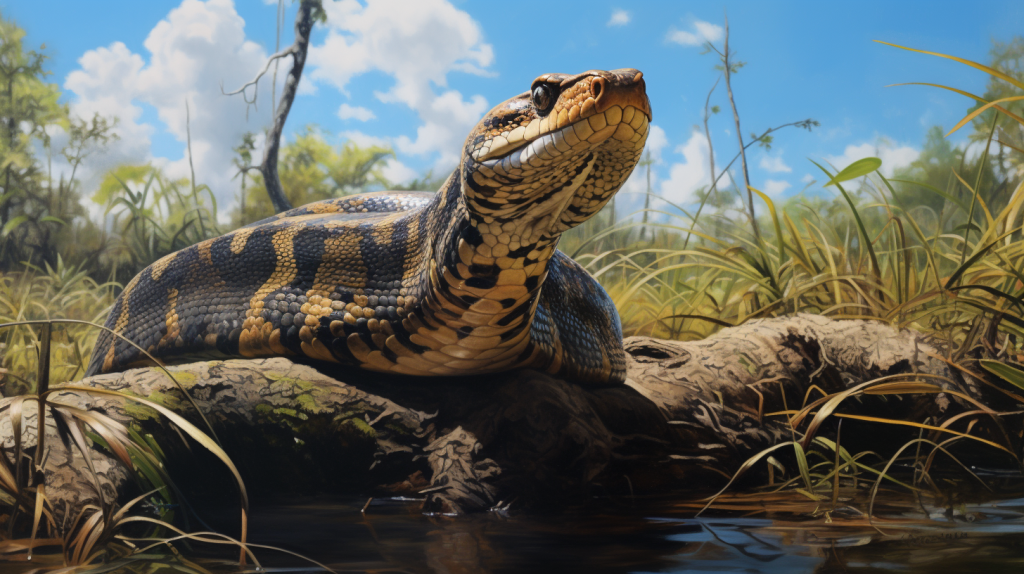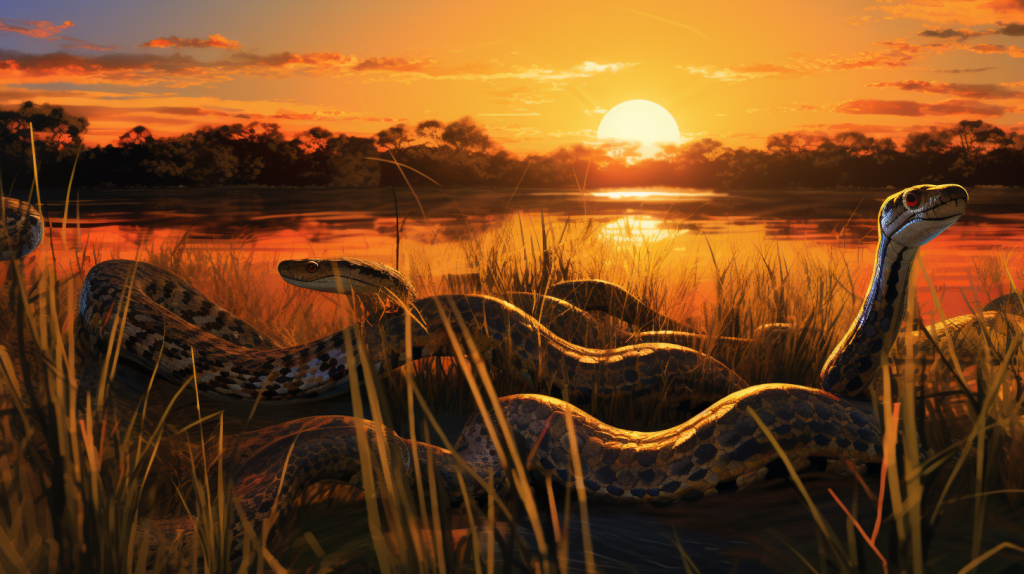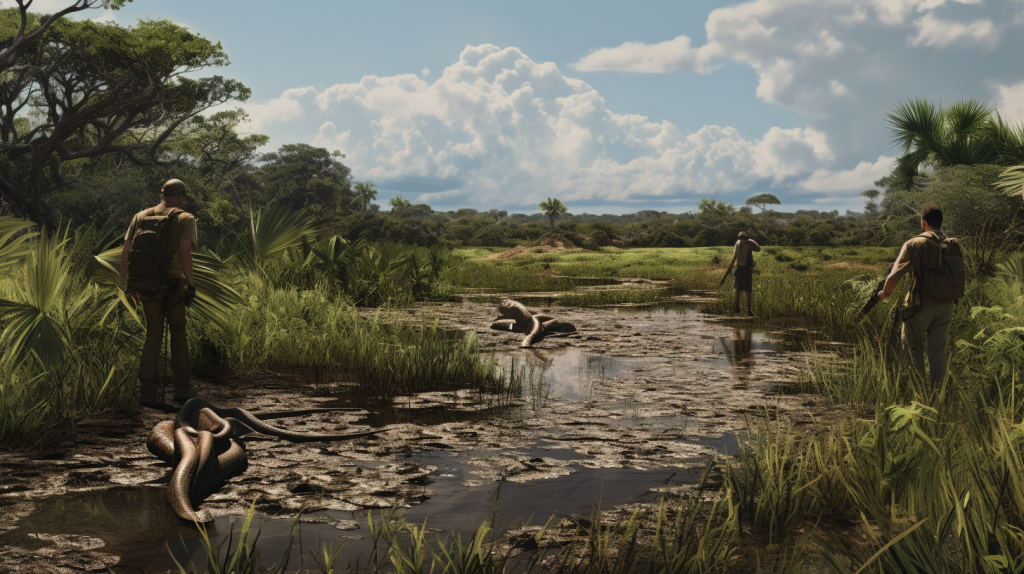Have you ever imagined a map of Burmese pythons in Florida, instead of a map revealing roads and cities, but the secret lives of creatures that have forged their presence in the wild? Picture a map of Florida, adorned not with highways, but with the invisible trails of one of the Sunshine State’s most notorious invaders – the Burmese python. Bursting forth from their exotic origins, these serpents have etched their mark on Florida’s landscape, leaving behind a trail of ecological impacts that are both perplexing and concerning.
Bursting into the Wild: A Python Invasion Unveiled
As we peer into the heart of Florida’s ecosystems, a story unfolds – a tale of invaders, adaptability, and a burst of disruption. The Burmese python (Python bivittatus), originally native to Southeast Asia, now roams the swamps, wetlands, and forests of the Everglades. Bursting into the wild, these massive constrictors have become a symbol of both fascination and apprehension. Their presence, often characterized by their striking patterns and impressive size, has ignited curiosity about their journey, their impact, and the perplexing puzzle they pose to Florida’s native fauna.
Mapping the Python Presence: A Burst of Awareness
Picture a map where each dot represents not just a location, but an encounter with the unexpected. This is the map of Burmese pythons in Florida, a mosaic of sightings that tells the tale of their geographic reach. Bursting with data points, this map showcases the extent of their invasion, illustrating how these serpents have infiltrated the delicate ecosystems of the state. It’s not just a map; it’s a snapshot of the challenges faced by researchers, conservationists, and authorities striving to understand and mitigate the impact of these alien invaders.
Let’s take a look at the map provided by EddMapS. See below.
A Habitat Transformed: Bursting Ecosystem Dynamics
Every habitat has its dancers, the species that choreograph the intricate movements of life. Now imagine a new dancer bursting into the scene, disrupting the rhythm and leaving a trail of confusion in its wake. Burmese pythons are those dancers in Florida’s habitats, bringing about a burst of transformation. As ambush predators, they’ve triggered a domino effect in the food web. Native species, once thriving in their niches, now find themselves in a burst of uncertainty as they navigate the presence of these apex predators. The python’s dietary preferences, ranging from birds to mammals, have altered the behavior of prey and, in turn, the very structure of the ecosystems they inhabit.
Unraveling the Impact: Bursting Consequences
Beneath the surface of this story lies a web of consequences – a burst of impacts that extend far beyond the snake itself. Native species are at the mercy of the python’s insatiable appetite, leading to declines in populations and even localized extinctions. Imagine a symphony silenced by the unexpected entrance of a new instrument, its notes replaced with a discordant burst. The delicate balance between predator and prey is thrown off, as the pythons become efficient hunters in an environment where they have few natural predators. The very essence of Florida’s wilderness is caught in a burst of transformation, as the presence of these invaders shapes the landscape in ways that continue to be explored.
Ripples of Concern: Bursting Conservation Efforts
When ripples appear on the surface of still waters, they carry the echoes of what lies beneath. In the realm of conservation, these ripples are the concerns that spread far and wide. Bursting with urgency, experts are pooling their resources to develop strategies aimed at managing the python invasion. From organized python removal programs to public awareness campaigns, the goal is to curb the population growth and prevent further ecological upheaval. The map of Burmese pythons in Florida has become a tool for more than just tracking their movement; it’s a visual representation of the challenges faced by those dedicated to preserving the state’s natural heritage.
Conclusion: Map of Burmese Pythons in Florida
As we reflect on the map of Burmese pythons in Florida, bursting with data and stories, we are confronted with the complexity of balancing ecosystems in the face of invasive species. Bursting challenges demand innovative solutions, a burst of collaboration among scientists, policymakers, and the public.
While the impact of the python invasion is undeniable, bursting hope emerges from the dedication of those working to preserve the natural wonders of the Sunshine State. The map serves as a reminder that while the invaders have left their mark, the burst of human effort can chart a course towards a harmonious coexistence between native species and the enigmatic newcomers.
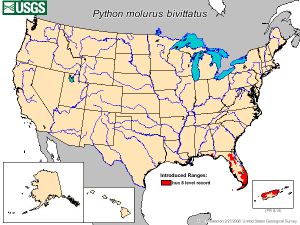
Credit:Wikipedia/Wikimedia Commons
FAQs on Map of Burmese Pythons in Florida
Q: How did Burmese pythons end up in Florida?
The presence of Burmese pythons in Florida can be traced back to the exotic pet trade, where some individuals escaped or were released into the wild. Bursting into the subtropical environment, these snakes have since established themselves as invasive species.
Q: What habitats do Burmese pythons thrive in?
Bursting into diverse habitats, Burmese pythons are highly adaptable. They can be found in wetlands, swamps, forests, and even urban areas, showcasing their ability to thrive in a variety of environments.
Q: How do Burmese pythons impact native species?
The impact of Burmese pythons on native species is significant. Bursting into the food web, they prey on a wide range of animals, leading to declines in native populations. This disruption cascades through the ecosystem, affecting interactions and dynamics.
Q: What conservation efforts are in place to address the python invasion?
Bursting forth with determination, conservationists are working tirelessly to address the python invasion. Removal programs, public awareness campaigns, and research initiatives are aimed at managing the python population and mitigating their impact on native wildlife.
Q: Can the python invasion be reversed?
Reversing the python invasion is a challenging task. However, the burst of conservation efforts provides hope. By reducing python numbers and implementing proactive measures, there is potential to restore balance to Florida’s ecosystems.

